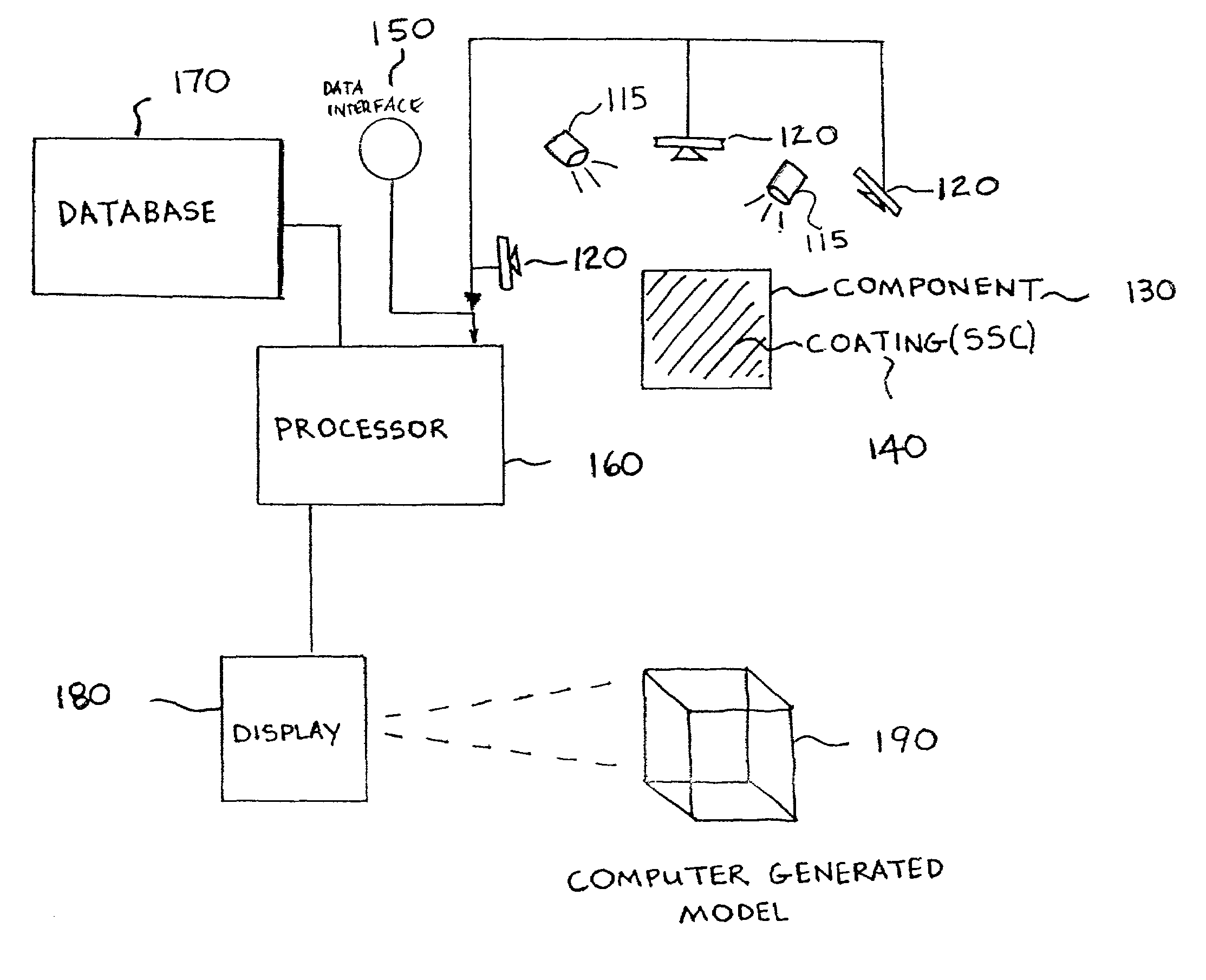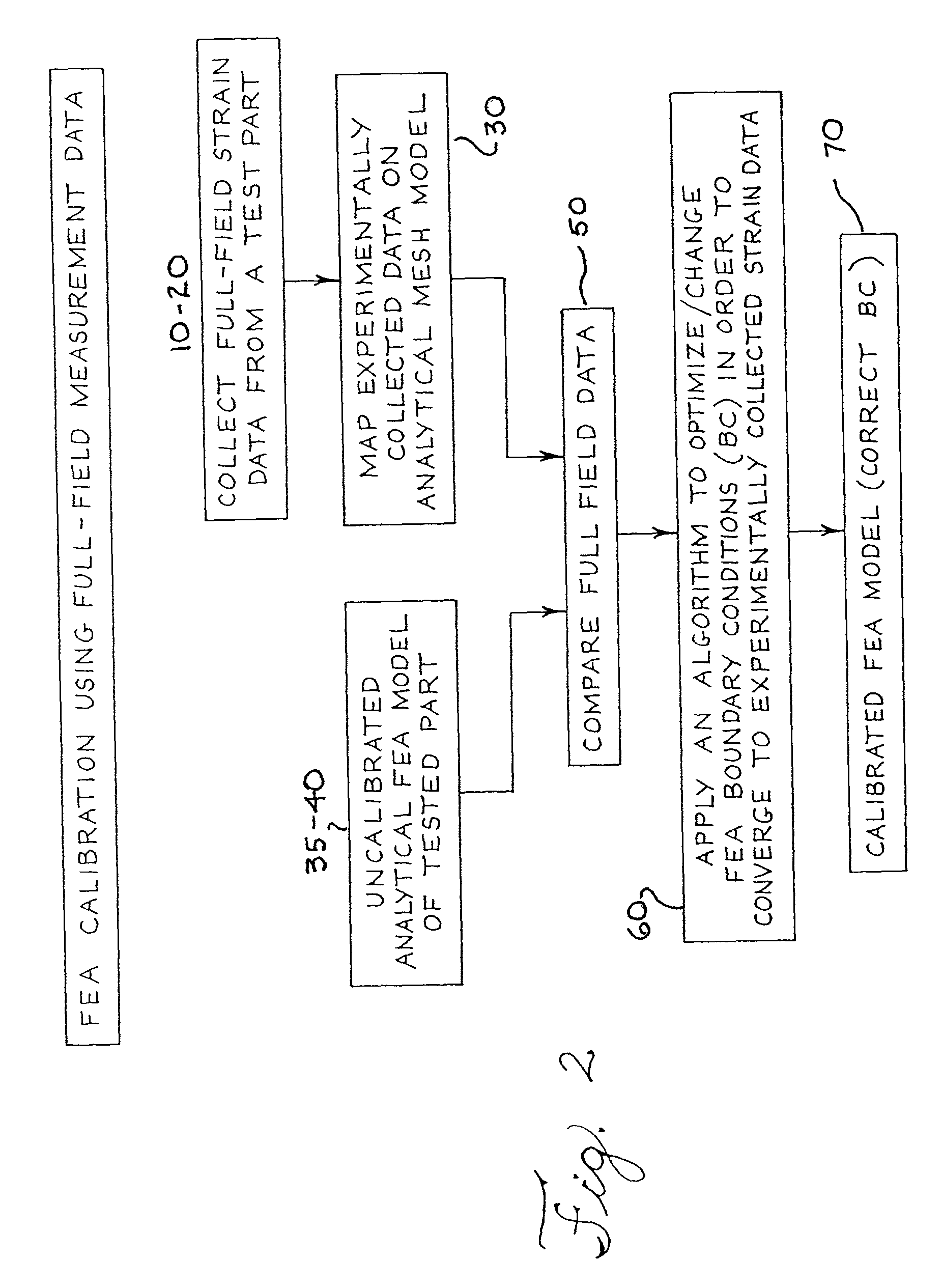Method for calibrating a mathematical model
- Summary
- Abstract
- Description
- Claims
- Application Information
AI Technical Summary
Benefits of technology
Problems solved by technology
Method used
Image
Examples
Embodiment Construction
[0015]Referring now to the drawings, FIG. 1 shows a preferred embodiment of the method for calibrating a mathematical model, as well as optimizing the design of a component.
[0016]Referring to FIG. 1, the first step 10 requires building a prototype of the physical component to be subjected to analysis. This prototype of a component is restricted only by a manufacturer's imagination and needs. In other words, it is contemplated that the following method for optimizing a mathematical model is not restricted by the size or shape of a component.
[0017]Step 20 involves running physical strain tests on the prototype component of step 10 in order to develop a full field measurement. A full field measurement reflects measurement of the component at continuous points when the component is subjected to stress or strain. Several full-field measurement techniques exist including, but not limited to, moire interferometry, geometric moire, SPATE, speckle methods, holographic interferometry, brittle...
PUM
 Login to View More
Login to View More Abstract
Description
Claims
Application Information
 Login to View More
Login to View More - R&D
- Intellectual Property
- Life Sciences
- Materials
- Tech Scout
- Unparalleled Data Quality
- Higher Quality Content
- 60% Fewer Hallucinations
Browse by: Latest US Patents, China's latest patents, Technical Efficacy Thesaurus, Application Domain, Technology Topic, Popular Technical Reports.
© 2025 PatSnap. All rights reserved.Legal|Privacy policy|Modern Slavery Act Transparency Statement|Sitemap|About US| Contact US: help@patsnap.com



